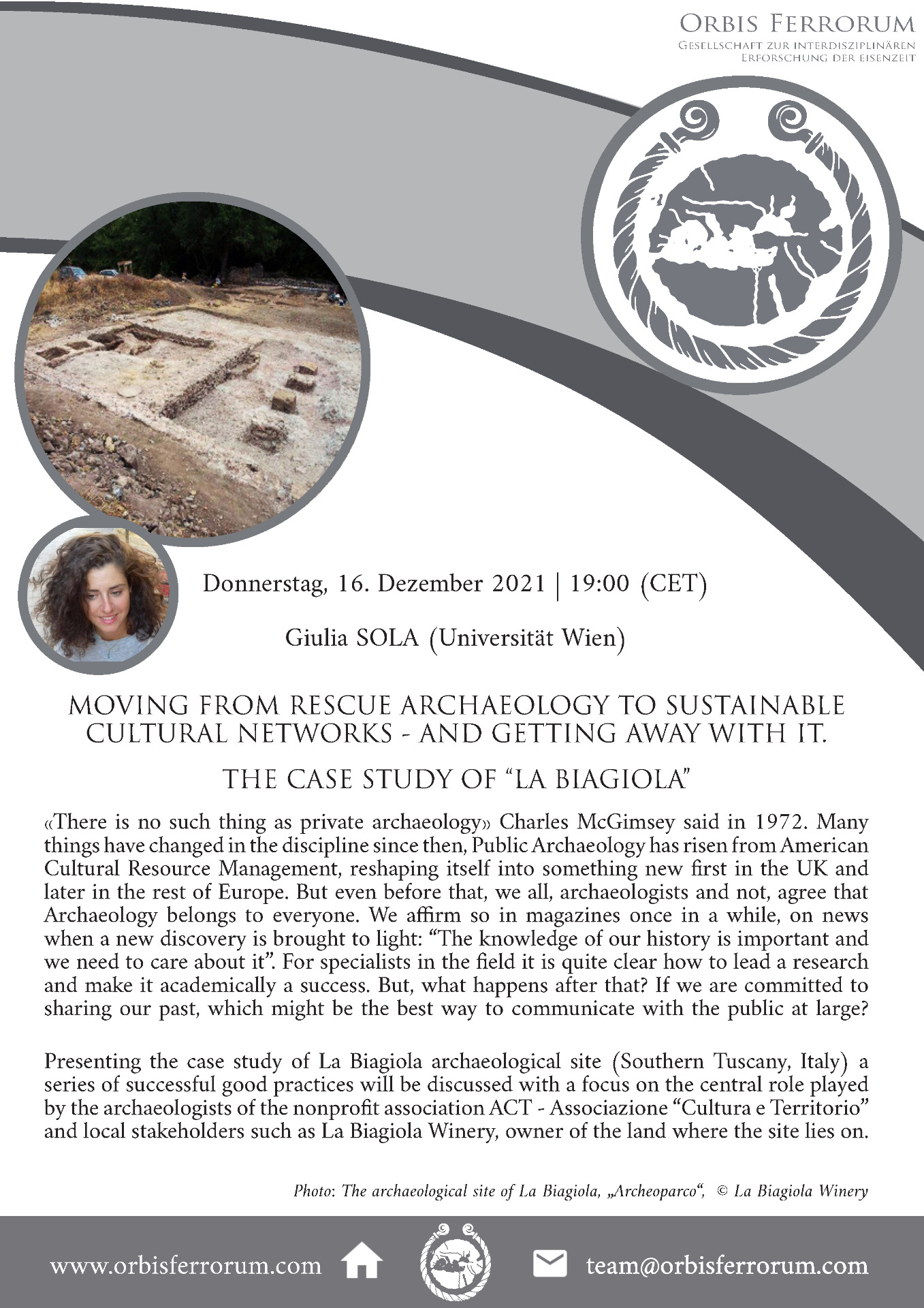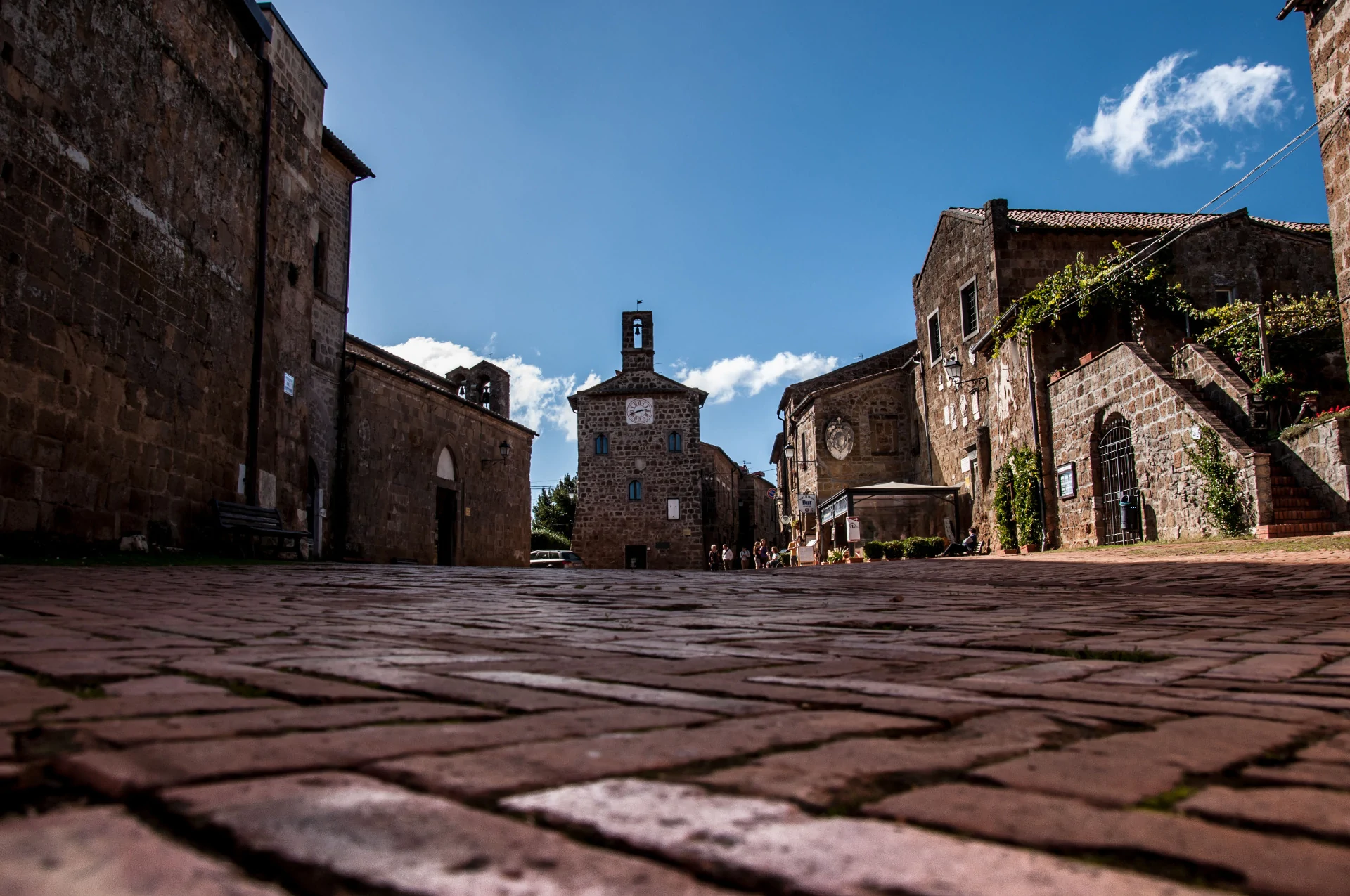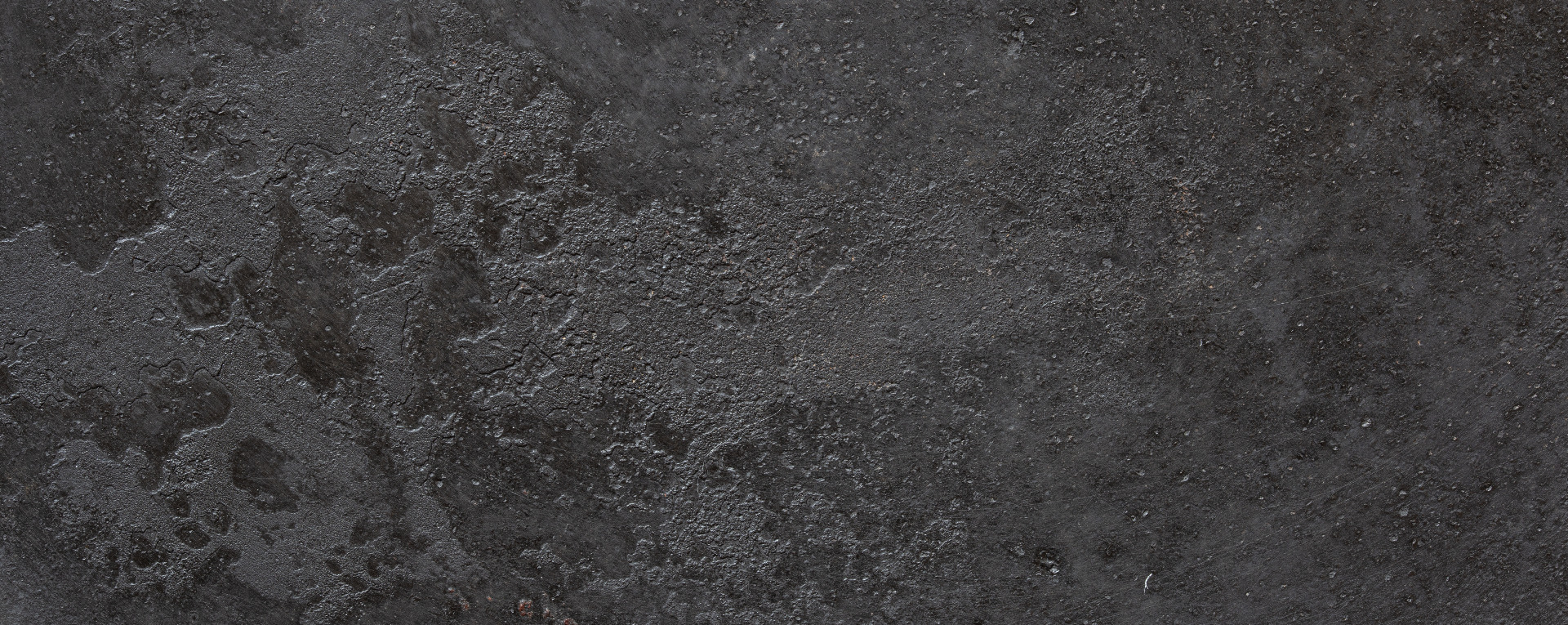
Missed the presentation? - No worries!
Here is our report:
Is Public Archaeology still Archaeology? Yes, it is!
For our opening lecture via Zoom on 16/12/2021, we invited Giulia Sola, a PhD student from the University of Vienna, to present a very exciting project in southern Tuscany:
MOVING FROM RESCUE ARCHAEOLOGY TO SUSTAINABLE CULTURAL NETWORKS - AND GETTING AWAY WITH IT. THE CASE STUDY OF "LA BIAGIOLA".
Giulia studied Classics, Archaeology and Ancient History at the University of Turin. Her doctoral studies brought her first to Bangor University and finally to Vienna. Giulia participated in numerous excavations and surveys during her studies and is now part of the team at the archaeological site "La Biagiola", Sovana (Grosseto, Italy) where she has been working as a member of BISA - "La Biagiola'' International School of Archaeology since 2019. Besides various positions as an archaeologist, Giulia was a member of the organising committee of "G-SHARPSS Seminars" (School of History, Philosophy and Social Sciences, Bangor University) in 2020/21. Additionally, she has been a registered teacher of Italian and Italian History since 2020.

Source: Archeoparco e scavi | La Biagiola Winery - Vini in Maremma (https://www.labiagiola.it/archeoparco/)

Source: Vermentino e Sangiovese | La Biagiola Winery - Vini in Maremma (https://www.labiagiola.it/la-biagiola/)

Source: “La Biagiola” International School of Archaeology (BISA) - Archaeological Fieldwork Opportunities Bulletin (AFOB) (https://www.archaeological.org/fieldwork/la-biagiola-international-school-of-archaeology-bisa/)

Source: “La Biagiola” International School of Archaeology (BISA) - Archaeological Fieldwork Opportunities Bulletin (AFOB) (https://www.archaeological.org/fieldwork/la-biagiola-international-school-of-archaeology-bisa/)

Copyright: ACT - Associazione "Cultura e Territorio"

Copyright: ACT - Associazione "Cultura e Territorio"

Source: "Piccoli paesi bellissimi. Sovana (GR)." by Geomangio, licensed under CC BY-NC-SA 2.0 (https://www.flickr.com/photos/67162861@N00/10269714874)
Archiv

What is Public Archaeology?
Public Archaeology is still a very young discipline that had its origins in the USA and then found its way into Europe via England in the 1990s and 2000s. Basically, it is about integrating all archaeological activities into a larger network and thereby including the public. The aim is not only to recognise and explore cultural heritage, but also to preserve it sustainably and make it accessible to the public.
Status Quo
The research and preservation of archaeological finds is, of course, nothing new. There are universities, museums and other institutions in the public and private sectors that have fulfilled these tasks. Interested people can get their knowledge from books, lectures, documentaries and museums. Even though there are many projects, active participation of the public remains very low. They can rather be seen as consumers of archaeological goods, i.e. finds and archaeological sites as well as archaeological knowledge and skills. Insights into archaeological work carried out by archaeologists are limited, which is also true for gaining archaeological experience through visits to museums or archaeological sites, educational courses and various forms of organised historical tourism.
What is new?
Public Archaeology offers the opportunity to examine all processes in connection with archaeological goods in more detail, to show processes and interactions between stakeholders and, above all, to develop an understanding of the economic aspects of archaeology. In doing so, the areas of politics, economics and the different interests of those involved are taken into account. Archaeology influences many areas and is very complex: Where may excavations be carried out? Who is allowed to carry out an excavation? Who pays for it? What happens to the finds? Who do they belong to? How and where are the finds presented to the public? What do the findings mean for a historical understanding? How can archaeological knowledge be marketed? These are just a few of the questions that need to be answered. It becomes clear that contradictions and tensions can certainly arise between the respective fields, depending on where the interests lie. However, in addition to the aim of highlighting these tensions and finding solutions, Public Archaeology can also make a valuable contribution to raising awareness of and promoting the importance of archaeology among the general public, and thus to the sustainable preservation of cultural heritage.
"La Biagiola"
Discovered in 2004 by the Gruppo Archeologico Torinese, it is the non-profit association ACT (Associazione "Cultura e Territorio") that has been entrusted with the excavation of the archaeological site "La Biagiola" since 2012. A Roman villa from the Roman imperial period built on Etruscan remains was found as well as some Etruscan findings, but also a cemetery with box and earth tombs from the Medieval period. A farm with a stable and shed dates to the early 20th century.
The project shows very well how a rural region can benefit from an archaeological site and what role archaeologists can play in this field. Instead of simply visiting the site, the visitors play a much more active role. By means of questionnaires and interviews, they are involved in the process, which also applies to public and private stakeholders in the region.
The International School of Archaeology is also of crucial importance, as it offers the opportunity to gain initial experience in archaeological excavations under the guidance of trained archaeologists.
The cooperation between the archaeologists and the winery "La Biagiola", the landowner of the site, is particularly interesting. In addition to cultural events and the combination of wine tastings with a visit to the excavation site, the influence of archaeology on the winery is particularly noteworthy. An old Roman production technique of the amphorae ("cocciopesto" technique), which are used in wine production, has been revived with the amphorae being produced by a local company. In this way, both sides, archaeology and local businesses, benefit equally from the material legacies and attract different groups of visitors. In addition, the project is integrated into the larger cultural network of the surrounding Area del Tufo, where various Etruscan sites can be visited.
Summary
Without doubt, the project "La Biagiola" shows how comprehensive Public Archaeology can be. In addition to actively shaping cultural education at the site and in the neighbouring region, the archaeologists continue to research, communicate knowledge, encourage local businesses to create new products, which in turn raises awareness of the archaeological heritage, promote contacts with the authorities and create networks.
At the centre of all these activities are archaeologists, trained experts without whose knowledge and experience the project would not be possible. So yes, Public Archaeology is part of archaeology!
Acknowledgements
We want to thank Giulia Sola, who presented this extremely exciting project and made many of us think - maybe rethink. We would also like to thank Dr. Luca Mario Nejrotti, the project leader, for attending the online talk and answering questions.
Finally, we would like to thank the audience, especially for the active participation in the discussion. Maybe we will see you on an excursion to Tuscany? We will keep you informed!
References
Schadla-Hall, T. (1999). Editorial: Public Archaeology. European Journal of Archaeology, 2(2), 147-158. doi:10.1179/eja.1999.2.2.147
Moshenska, G. (2010). What is Public Archaeology?. Present Pasts. 1. 10.5334/pp.7.
Matsuda, A. (2004). The Concept of 'the Public' and the Aims of Public Archaeology. Papers from the Institute of Archaeology. 15. 10.5334/pia.224.
Interesting links
https://www.summerschoolsineurope.eu/course/14310/la-biagiola-international-school-of-archaeology

